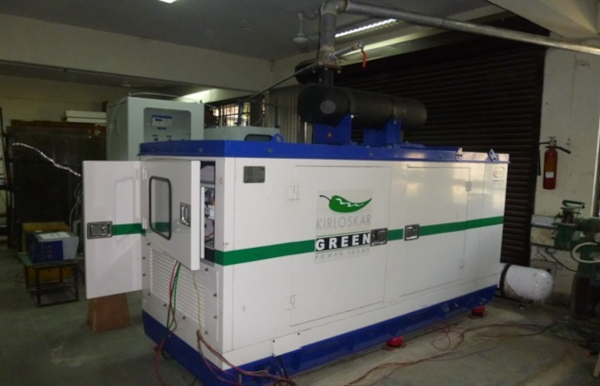Diesel-fuelled internal combustion engine generator for electrical power generation mainly emits carbon monoxide (CO), Hydrocarbon (HC), Smoke, Particulate Matter (PM), Oxides of Nitrogen (NOx) and Carbon dioxide (CO2) emissions resulting in a contribution to air pollution.
To tackle this, researchers at the Engines and Unconventional Fuels Laboratory, IIT Delhi developed a new technology and built “Hydrogen fuelled Spark-Ignition Engine Generator” in collaboration with Kirloskar Oil Engines Limited (KOEL), and the Indian Oil R&D Centre for the utilization of hydrogen in internal combustion engines for zero-emission with higher thermal efficiency. A dedicated lubricating oil for the engine was also developed by the IOCL.
The project was mainly funded by the Ministry of New and Renewable Energy (MNRE), Government of India, and supplementary funded by KOEL and IOCL R&D Centre. IIT Delhi and KOEL have jointly filed a patent application for the technology.
“As Hydrogen does not contain carbon, the hydrogen-fuelled engine does not emit any carbonaceous emissions. The emission ‘oxides of nitrogen’ can be controlled to ultra-low level using the appropriate technologies”, said Dr. K.A. Subramanian, Principal Investigator of the project and professor at the Centre for Energy Studies, IIT Delhi.
Diesel-fuelled internal combustion engine generator for electrical power generation mainly emits carbon monoxide (CO), Hydrocarbon (HC), Smoke, Particulate Matter (PM), Oxides of Nitrogen (NOx) and Carbon dioxide (CO2) emissions resulting in a contribution to air pollution.
Hydrogen is available as a tangible product from industries including chloro-Alkali, ammonia, and refineries. Hydrogen can also be produced from the splitting of water using electrolyzers coupled with renewable energy sources (solar, wind, biomass, etc.). The surplus electricity can be converted into hydrogen using the electrolyzer and then, the electricity can be produced using this engine whenever needed such as meeting peak load demand, no short-term grid power available, emergency, etc.
The hydrogen fuel at up to 4 bar from the gaseous cylinder (150 bar / 350 bar / 700 bar) or the pipeline stored at low pressure (10 bar and above) in the industries will be injected into the intake manifold of the engine.
The technology will be useful to the industries (chloro-Alkali, Ammonia, etc.), those are producing hydrogen as tangible or main products, to generate electrical power to meet their inhouse-power requirement in the industry”.
The developed hydrogen engine can also be used in decentralized power generation for industries, buildings, etc. Thus, the green power with hydrogen can be generated using the multi-cylinder spark-ignition engine generator with the developed technology for strengthening the sustainable energy and environment.”
Dr. Subramanian added, “If hydrogen infrastructure can be developed and made available in the future, diesel generators can be replaced with hydrogen generators for electrical power generation. It will help to control air pollution, especially in urban areas.”
Source: Vigyan Prasar
You may also like
-
New Heat-Based Approach To Cancer Treatment Can Reduce Chemotherapy Doses
-
Scientists Take A Major Step Towards Unification Of Classical & Quantum Gravity
-
India Graphene Engineering and Innovation Centre (IGEIC) Under the Vision of Viksit Bharat@2047 Launched
-
New High-Performance Gas Sensor can Monitor Low Level Nitrogen Oxides Pollution
-
Antidepressant Drug can be Repurposed for Treating Breast Cancer
